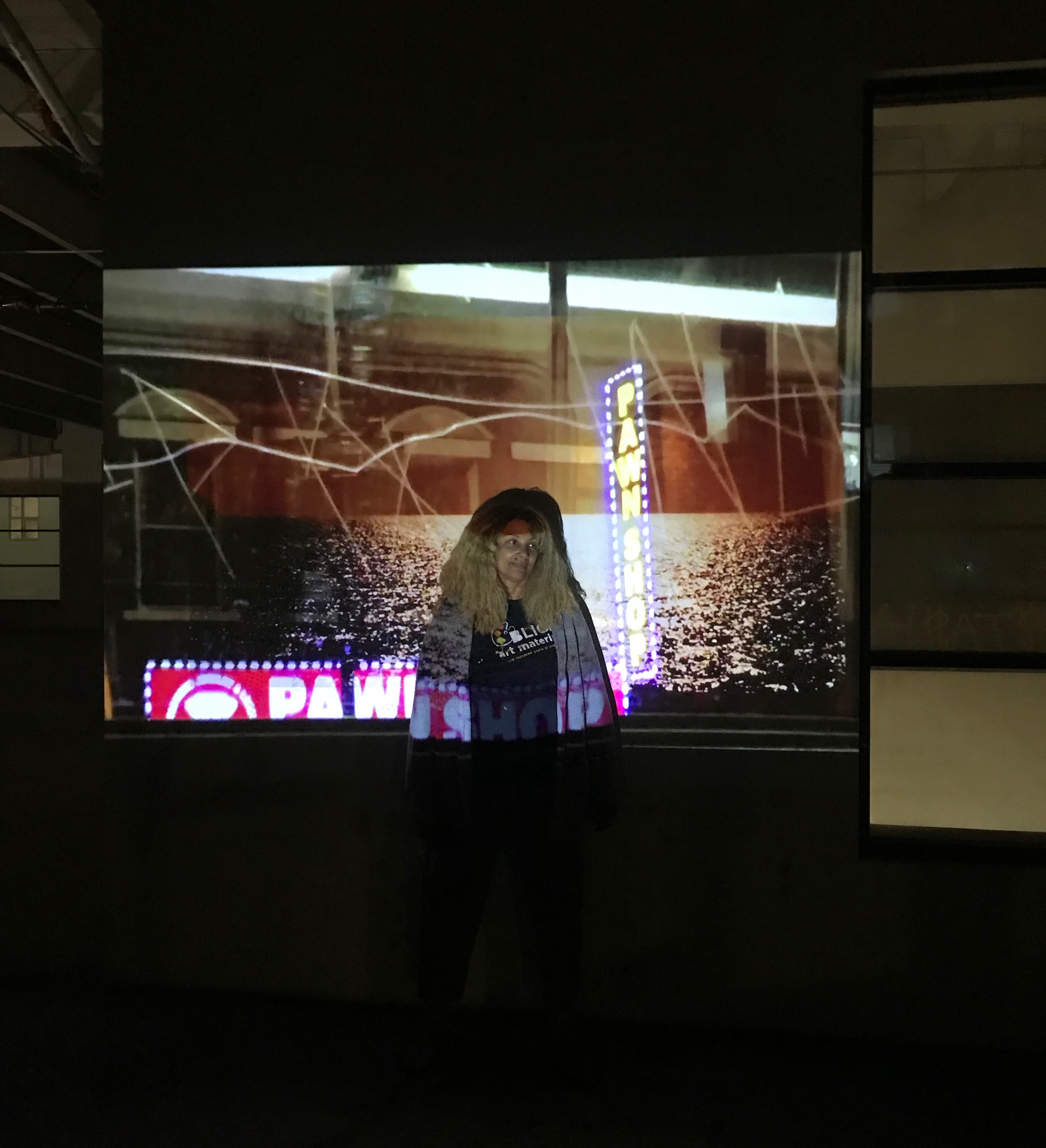
Linda Leigh and I met one spring day in 2018, at an art book library, which was really just a corner in the supply room of Studio 526. The Studio is a community art center housed inside the social service agency building on San Pedro in downtown LA.
My first week there, I picked up a stapled booklet titled Skid Row Zine from a black storage bin. It featured photos and texts by Studio artists.
A poem took hold of me. I stayed with it for a long minute, maybe too long, because someone had to yell for my attention. (My job was to grab whatever tools the artists requested from the supply room. Artists were not allowed in, lest they felt inclined to take any sharp object.)
The poem was by Linda Leigh. It was about her dad. She bathed him, and he let her. They both knew he didn’t have much time left.
My first week there, I picked up a stapled booklet titled Skid Row Zine from a black storage bin. It featured photos and texts by Studio artists.
A poem took hold of me. I stayed with it for a long minute, maybe too long, because someone had to yell for my attention. (My job was to grab whatever tools the artists requested from the supply room. Artists were not allowed in, lest they felt inclined to take any sharp object.)
The poem was by Linda Leigh. It was about her dad. She bathed him, and he let her. They both knew he didn’t have much time left.
When I finally met Linda, I was starstruck. I asked if she was the Linda from the zine. She turned. Behind the pink dollar store shades, she smiled.
We decided that we'd work on a project together. The result is Passage.
We decided that we'd work on a project together. The result is Passage.
Stills from the video -








Passage, the event, took place on the ground level of a five-story parking garage on March 28, 2019.
The heavily edited video, projected onto the wall, documents three years of my moving through the city. Hours and hours spent on streets, underpasses, overpasses, buses, and in parking lots—packed down into 14 minutes.
The crowd gathers. Some come alone. Others arrive in pairs. Neon light from nearby shop signs bleeds through the windows. Linda stands against the wall, pulsing with the traffic. Her voice, not particularly loud, fills the lot:
She takes us to the night she looked out to the jet black ocean waiting for grunions. She takes us to the day her parents first met. She confides in us the many lives she’s lived.
Main Street runs just above Los Angeles Street, where Skid Row begins. It’s an implicit boundary, the edge of a cliff. Past Main, people can’t act weird. They drag filthy blankets through puddles, urinate, defecate, howl, and sleep barefoot outside, but it’s perfectly everyday.
The five-story parking garage belongs to the new loft apartment. For residents only. The ground floor is always empty, because they can afford to leave it empty. Lunctime is the busiest hour. You might spot a pair of musicians honing their act for the red line to North Hollywood. Retail employees drift in with compostable containers. Security knows who gets to stay. One quick glance is enough.